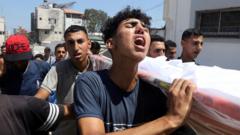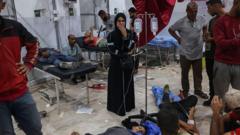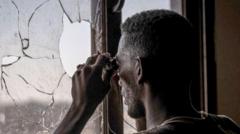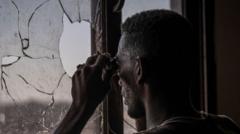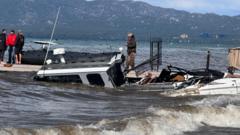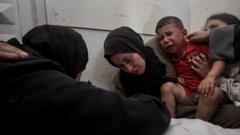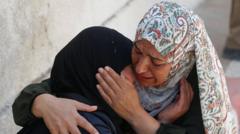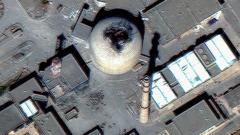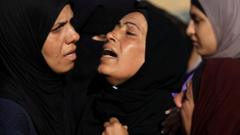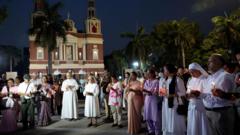Following a 7.7 magnitude earthquake that struck Mandalay, widespread devastation has left many victims trapped and in urgent need of assistance. The military government's control and ongoing civil unrest have severely hampered rescue operations, leaving families devastated and struggling for survival.
Myanmar Earthquake Survivors Face Overwhelming Struggles Amidst Destruction
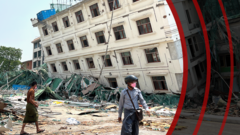
Myanmar Earthquake Survivors Face Overwhelming Struggles Amidst Destruction
In the aftermath of a devastating earthquake in Mandalay, Myanmar, survivors are grappling with insufficient aid, loss, and despair as rescue efforts falter in the face of political turmoil.
Driving into Mandalay, the extent of destruction from last Friday's earthquake becomes evident with each turn. Many buildings, especially in the northern and central parts of the city, lie crumbled to rubble, with numerous structures showing alarming cracks, rendering them unsafe for occupation. Patients in the local hospital are treated outdoors due to damages sustained.
Myanmar's military government has barred foreign journalists from entering the country, prompting our undercover entry amidst fears of spies from the ruling junta. We witnessed a dire situation, with little help reaching the desperate survivors.
"I have hope that he's alive, even if it's a small chance," Nan Sin Hein, 41, lamented outside a collapsed five-storey building, her son, a 21-year-old construction worker, still missing. The building sank during the earthquake, trapping Sai Han Pha and four colleagues inside, and rescue efforts had not yet begun when we arrived.
The ongoing civil war in Myanmar has already displaced around 3.5 million people, complicating relief operations even further. Military security forces find themselves overstretched and under-equipped, which has led to a slow response in rescue efforts across the city.
While some international aid is being pledged, logistics hinder the flow of help, as the military’s poor relations with Western nations slow down vital manpower provisions. Thus, the relief operations largely come from countries like India and China, aiming efforts at the most critical collapse sites, like the U Hla Thein Buddhist academy.
Rescuers contend with extreme heat and rubble, employing metal drills to break apart heavy concrete debris. With temperatures nearing 40°C, the grueling work leads to horrifying discoveries of decaying bodies. Families, gathered anxiously outside makeshift mortuaries, hope to identify their loved ones from images shared by rescuers.
The aftermath has not spared Mandalay's beloved historical sites, with areas like the Mandalay Palace and Maha Muni Pagoda facing significant damage. Collective mourning is palpable as locals hold funeral rites in the streets for much-loved community members lost in the disaster.
Casualty estimates have reached 2,886 according to the military government, but with numerous collapse sites still unvisited, the actual toll likely exceeds that figure. Makeshift camps have sprung up throughout Mandalay, as people sleep under trees, fearing aftershocks shaking the city repeatedly.
Elderly survivors like 72-year-old Daw Khin Saw Myint stand in dire need, having lost their homes and livelihoods in the disaster. "I don't know what to think anymore... We don't have anyone to rescue us," she pleas through tears.
Aid distribution is largely left to small local organizations under immense pressure, leaving thousands scrambling for basic necessities. Medical facilities, already strained, struggle to care for the influx of injured, many tended to by unqualified family members as medical professionals remain scarce.
As hope dwindles and expectations shift towards recovery rather than rescue, the heart-wrenching struggle for survivors like Nan Sin Hein serves as a grave reminder of the seismic toll this disaster has wrought on the city and its people.

